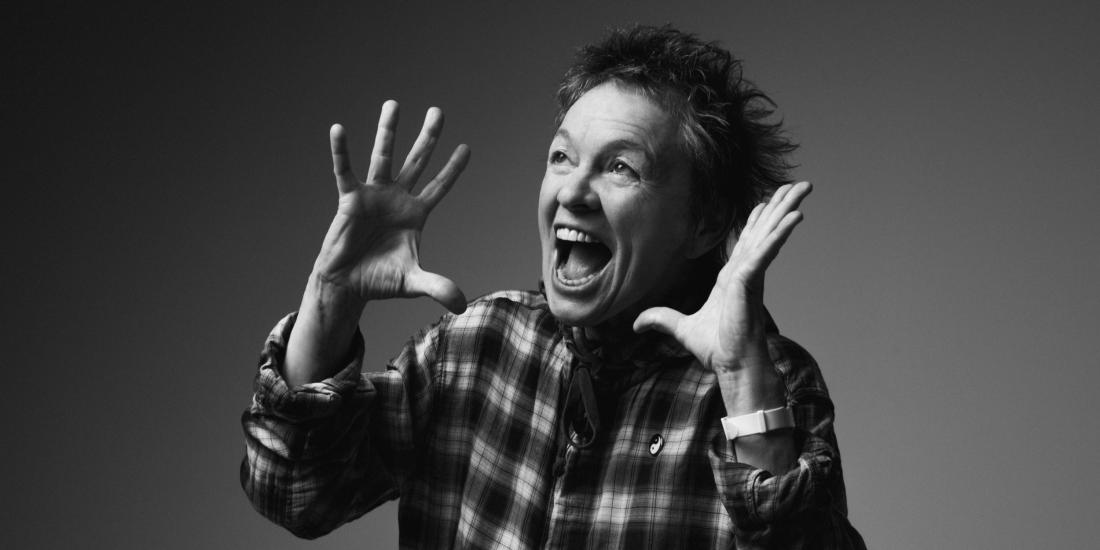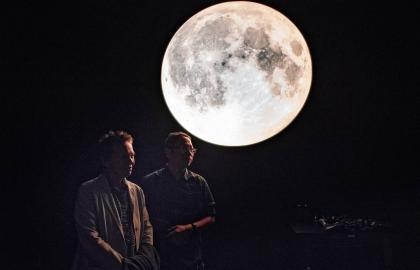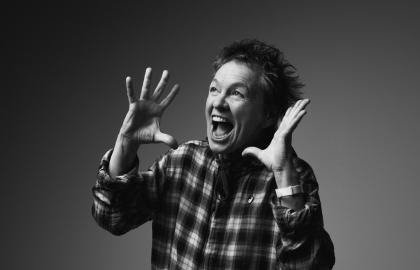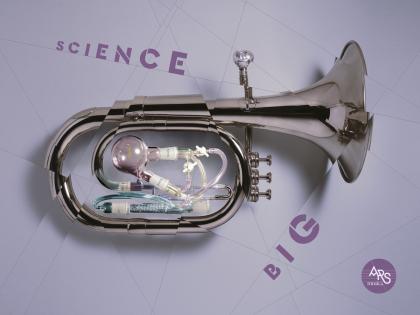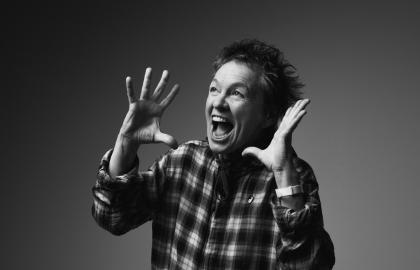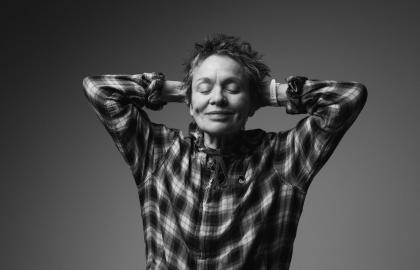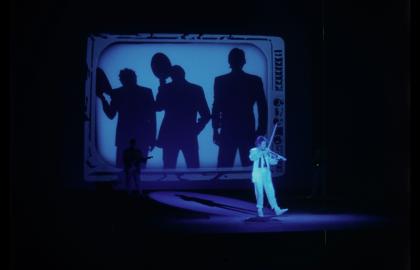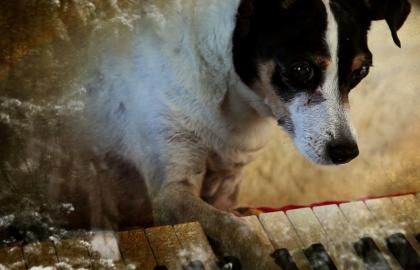O Superman
Laurie Anderson became world famous in 1981 when she scored a hit with O Superman from her album Big Science. It promptly reached number two in the British charts. However, she had previously created equally interesting music and performances in the New York scene. Duets On Ice, where she played the violin while wearing skates made of ice, until they melted, is a typical example. It's Laurie Anderson all over. With O Superman, Anderson managed to build an avant-garde bridge to a wider audience. A move not always appreciated by her colleagues, but she didn't take it to heart, as she signed a seven-album contract with Warner Classics. Telling stories to a wide audience was always her ambition.
"One of my jobs as an artist is to make contact with the audience, and it has to be immediate. They don't come back later to look at the details in the background."
Pioneer in sound
Laurie Anderson wrote a great deal of music for a wide variety of projects. She enthusiastically taps into the New York avant-garde with influences from minimal music by her good friend Philip Glass or the experiments of the revolutionary John Cage. Her quirky compositions earned her collaborations with film-makers such as Wim Wenders and Jonathan Demme, but she has also composed music for choreographies by Bill T. Jones and Trisha Brown. One of her most important compositions is Songs for Amelia Earhart, an orchestral work about the American pilot who mysteriously disappeared during a historic attempt to fly around the world in 1937. Drawing on her diaries and radio messages, Anderson created a composition that blends technology, her own voice and minimal music to create an intriguing mix. In her musical work, she constantly explores new sound worlds and sonorities, using electronics, everyday objects or self-created instruments.
Four-string craziness
When you talk about Anderson's career, you rarely get past her violin. Laurie and the four-stringed instrument are inseparable. She began playing at a very young age and she was even active for a time with the Chicago Youth Symphony. In her performances, the instrument pops up with regularity, and in very different ways. Just as John Cage, in his prepared piano, manipulated the sounds by placing pieces of paper, metal or rubber between the strings, Anderson also looked for alternatives. She created some of her own violins, such as the Neonviolin - a specimen made of neon light that produces piercing sounds or the Ventriloquist Puppet with Violin - a hand puppet that looks just like the artist and also, controlled by Anderson's hand, plays Suzuki violin.
"For me, the violin is the perfect alter ego. It's the instrument closest to the human voice, the human female voice. It's a siren."
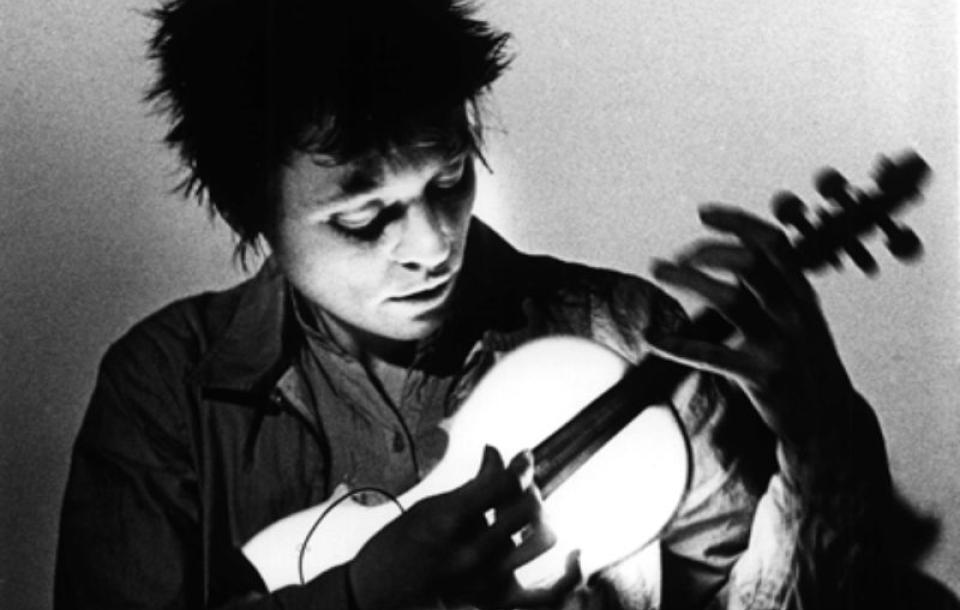
The so-called Tape Bow Violin is her most famous instrument. On the bow, instead of horsehair, she used magnetic audio tape and on the bridge she placed a tape head. By moving the bow over the magnetic tape head, she can play the sound captured on the tape backwards and forwards. This creates very peculiar sounds that she can manipulate to her heart's content based on the movements of her bow.
Barking images
Although Laurie Anderson is best known for her musical performances, she has also been involved in a few projects in the visual arts. Again, she always breaks through the classic canvas: performance, installation, sound, video - everything flows together. You could already see her work in major museums such as the Guggenheim Museum in New York and Centre Pompidou in Paris. As recently as 2008, MoMa purchased her Self-playing Violin.
In 2011, Laurie Anderson says she stepped out of her comfort zone with the exhibition Forty-Nine Days In the Bardo, where she returned to materials such as chalk, charcoal, mud, clay and paper. In a series of giant charcoal drawings of her deceased dog Lolabelle, Anderson, who is a practising Buddhist, imagines her dog's experience in the Bardo, the 49-day period before reincarnation. And her beloved sound box also reappears. Anderson mixed Lolabelle's ashes with mud and clay to create an iconic violin.
Her faithful four-legged friend also plays a starring role in Anderson's film career. In 2015, she directed Heart of a Dog (2015). The death of Lolabelle triggers Anderson to reflect - as in Bardo - on the meaning of loss: of her dog, of America after 9/11, of her life partner Lou Reed... In Home of the Brave (1986), Anderson then turns to music again. The result is a scintillating cine-concert based largely on the tour for her album Mister Heartbreak.
Tech tech tech-Laurie-gy
Are you still surprised that technology and innovation feature prominently in Anderson's work? She is rightly known as one of the pioneers of electronic music, as she keeps inventing new ways to handle electronic instruments such as the synthesizer or the violin. In recent years, she developed a fascination with Virtual Reality and Artificial Intelligence. She sees parallels between creative ideas and the use of AI, as both can be highly free and unpredictable. So, in the performance with cellist Rubin Kodheli, she considers AI not as a machine, but as a third participant in the concert.
"One of my favourite quotes about technology is from my meditation teacher: 'If you think technology will solve your problems, you don't understand technology and you don't understand your problems'. When people say the purpose of art is to make the world a better place I always think: better for who? Art is not medicine or science. It's not about creative problem solving. If I had to use one word to describe art it would be freedom. I'm curious about whether this freedom can be translated or facilitated by AI in a meaningful way."
Anderson was the first-ever artist-in-residence for the US space agency NASA, an otherworldly passion that also shines through in her VR work. On the occasion of the 50th anniversary of the moon landing, together with multimedia artist Hsin-Chien Huang, she created the immersive installation To The Moon, which takes you to the moon, and beyond!
